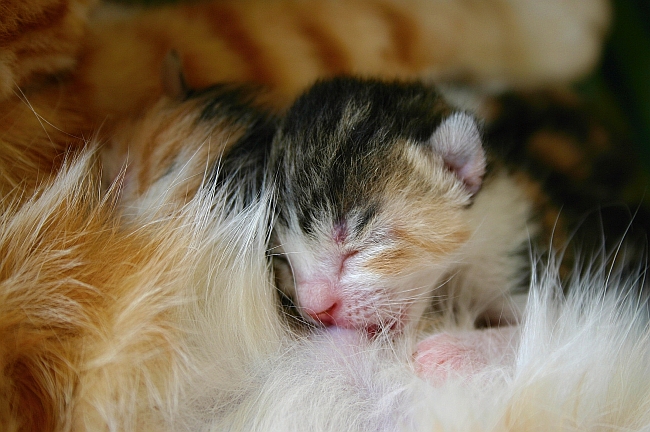
Imagine getting paid to play with newborn kittens every day before they ultimately find a good home. Breeders get to enjoy this privilege, making their job very appealing. However, deciding to breed cats is a serious commitment that should not be taken lightly. What most people don’t consider are the risks, expenses and time investment involved. Here are some details about what breeding a cat entails, how a feline’s reproductive cycle occurs and what a cat owner might expect from the experience.
Breeding Costs and Risks
- Pre-breeding physical exam costs and blood tests to make sure the cat is in good health. (The exam should include testing for kidney disease, heart disease, hip dysplasia, patellar luxation, FeLV, FIV, internal parasites, ear mites, fleas and ringworm.)
- If you do not already own two members of the same breed and the opposite sex, you may have to pay a “stud fee” so the cats can mate.
- Cost of spaying and neutering each kitten before they are sold
- Paying for vaccinations for each newborn kitten
- Being prepared to pay for a c-section delivery if the cat is in distress
- Advertising for the kittens to inform prospective buyers
- Coordinating care with animal shelters and pet-adoption days if the animals do not sell.
- Breeding subjects the cat to a high susceptibility of contracting mammary cancer. Failing to neuter tom (male) cats will increase the likelihood for spraying around the house and a strong odor of urine
Breeding Details
- Queens (female cats) are “seasonally polyestrous” which means they can give birth multiple times a year. When allowing nature to take its course, a cat can breed up to three times annually (an option that is only shared by rabbits). Note: Just because cats can be bred that often does not mean that they should.
- Felines may be breed once they have reached sexual maturity at around 6-7 months of age. However, most professionals suggest breeding a cat after her first initial heat cycle. The cat is fertile for around 6-9 years after that.
- A heat cycle for a queen includes a few stages: proestrus (the pre-mating stage when the cat will show signs of discomfort and agitation lasting for 1-2 days). Estrus (lasting about a week when the cat is able to mate with the tom cat). Once the cats have mated, the queen will groom herself for about 20-30 minutes, before the male may try to mate with her again. Breeding three times a day for the first three days of the estrus cycle will make the chance of pregnancy 90% more probable.
- Heat cycles begin around January and February, and continue through October or November. A cycle can last anywhere from 3-20 days, but on average a feline’s heat cycle begins roughly every two weeks when in the breeding season.
- The gestation time for cats is 64-67 days, with a litter of anywhere from 3-5 kittens. The kittens are only ready to leave the mother when they are about 12 weeks old. (Note: because of the heat cycle, the queen may begin estrus again when the first litter of kittens are between 8-10 weeks old.)
- If you have other questions about breeding a specific feline breed, it would be important to connect with can fanciers in your region and find associated breeders who can offer support and advice.

